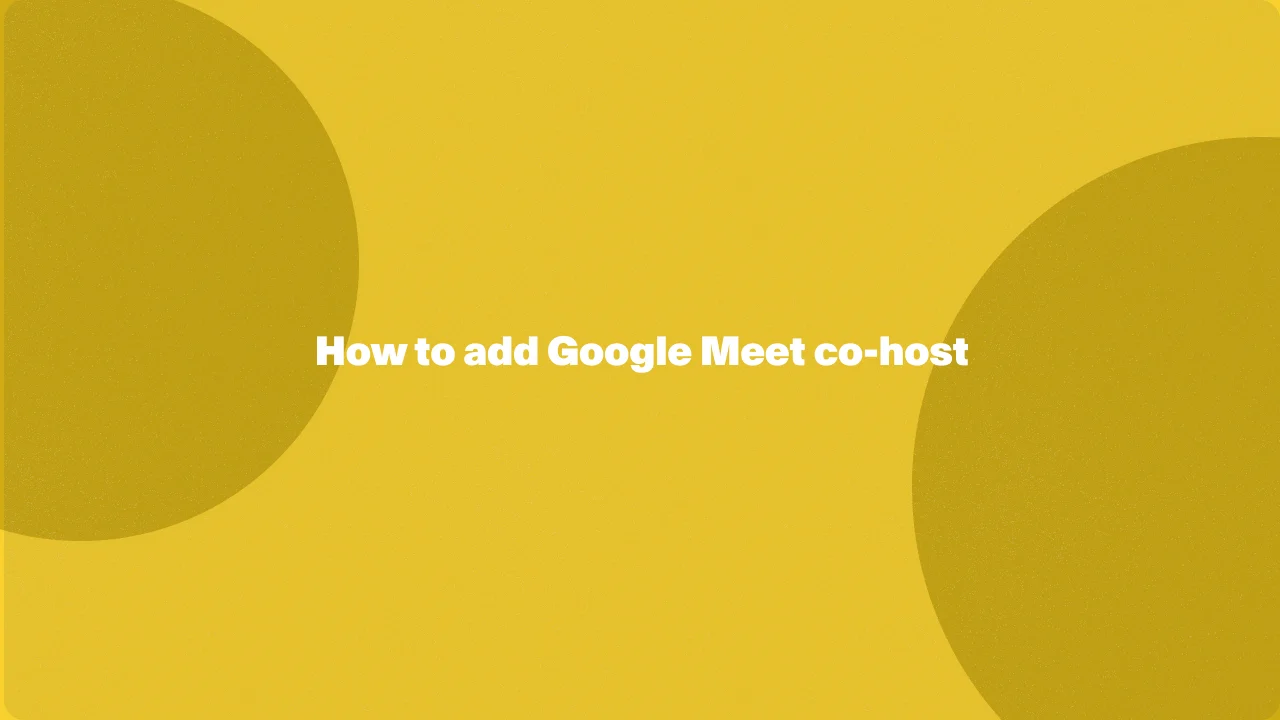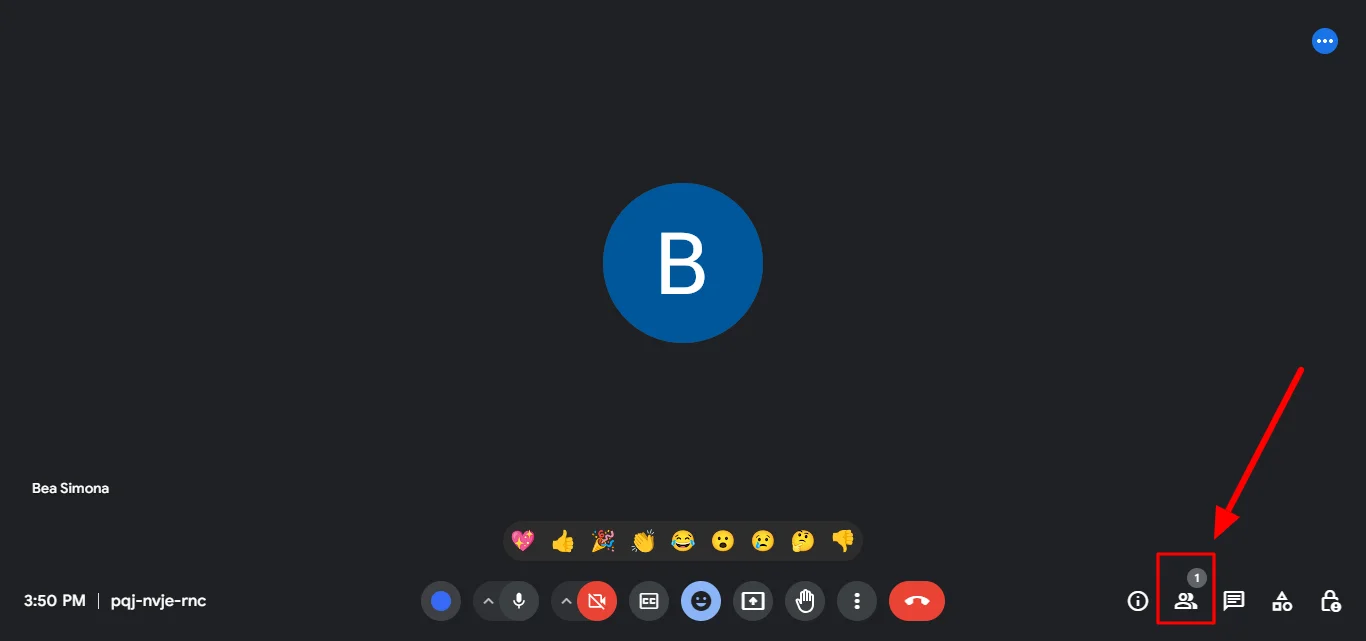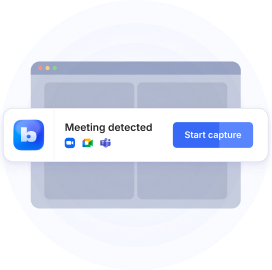
If you ever feel overwhelmed managing a large Google Meet meeting, consider utilizing the co-host feature. This feature allows you to designate trusted participants to share hosting responsibilities, alleviating your workload and fostering a more collaborative environment.
These new hosts can mute/unmute attendees, manage screen sharing, and even control chat. Continue reading to discover the step-by-step process of assigning new hosts, along with valuable insights on the problems it solves and the overall benefits it brings to your meetings.
What Is Host Management On Google Meet?
On Google Meet, Host Management is a set of features that grant the meeting host more control over the meeting experience for both themselves and the participants in the paid Google Workspace edition. When enabled, the co-host empowers the host with several functionalities:
- Assigning new hosts: You can designate other participants as a new host, giving them some of the same control abilities you have, such as muting/unmuting attendees or managing screen sharing.
- Enhanced moderation tools: Co-host unlocks a range of tools to regulate the meeting flow:
- Chat lock: Prevent participants from using the chat functionality.
- Present lock: Only the host or designated presenters can share their screens.
- Audio lock: Mute all participants or selectively mute individuals.
- Video Lock: Disable video for all attendees.
- Improved security: Hosts Management can help maintain a more secure meeting environment by restricting participant actions.
- Breakout room management: Hosts Management must utilize breakout rooms, which allow you to split the meeting into smaller discussion groups.
Who Can Add Co-Hosts To A Meeting?
The person who created the Google Meet meeting, also known as the main host, can add co-hosts. There are a few things to keep in mind:
- Hosts management: This feature needs to be turned on for new hosts to be assigned. The main host can enable it before or during the meeting.
- Finding hosts: The new hosts must be participants in the meeting already.
- Google Workspace permissions: Following Workspace editions such as Enterprise Essentials, or Enterprise Plus, Hosts Management might be disabled by default. Workspace admins can configure these settings such as the meeting name.
Add Co-hosts In Google Meet
Here are a few ways to add new hosts into your Google calendar event as well as in a already live meeting.
Add a co-host before a meeting starts
On your desktop browser:
- Go to Google Calendar.
- Click Create and select Google Calendar Event.
- Add your meeting details like title, date.
- Invite participants by entering their email addresses.
- Click Add Google Meet video conferencing.
- Tap menu of video call options (gear icon).
- In the pop-up window, turn on Host Management.
- Click on the Guests tab and then Co-hosts.
- Enter the names of the participants you want to as new hosts. Select them from the dropdown list as you type.
- Click Save within the top left corner.
- Finally, click Save to save the entire event in Google Calendar.
Add a co-host to an existing meeting
Even if you didn't designate any new hosts beforehand, you can still add them during an ongoing Google Meet meeting. Here's how to do it on your desktop browser:
1. Join the Google Meet meeting you want to add a host to.

2. Click on the People icon in the bottom right corner.

3. This will display a list of all participants in the meeting.
4. Find the participant you want to make a host.
5. Click the three dots next to their name.
6. A menu will appear. Select "Make co-host".
Share Meeting Artifacts With Co-Hosts
Certain functionalities within a Google Meet event generate Meeting Artifacts, including items like Meet recordings, attendance reports, polling data, and various documents. By default, these artifacts are automatically accessible to the primary meeting host. If you desire new hosts to also have access to Meeting Artifacts, you must follow these steps:
- Ensure that Host Managements is activated prior to appointing any individuals as co-hosts.
- Designate them as new hosts during the setup or modification of the event using Google Calendar.
- Enable the artifact sharing feature when adding new hosts through the settings in Google Calendar.
Turning Host Management On Or Off
- Open meet.google.com on your computer.
- Enter a meeting.
- Click on Host controls at the bottom right corner.
- Activate Host Management feature from the side panel that appears.
- To deactivate, click on Host Management feature and then toggle it off.
Adding Or Removing A Co-Host
- Open a meeting in Google Meet.
- Navigate to the bottom right corner and click on the "Show Everyone People Tab" option.
- Within the "People" tab, locate or search for the participant’s name.
- Click on the menu icon next to their name.
- Choose "Grant host controls" and then select "Add people and bots."
- After granting hosting privileges, the new hosts will see the Host Control icon appear at the bottom of their screen.
Conclusion
Google Meet offers robust features for managing your online meetings, including the ability to designate co-hosts and meeting safety. However, if you're looking to enhance your Google Meet experience even further, consider using Bluedot.
One of the key advantages of Bluedot is its recording capabilities. This is especially valuable when someone shares their screen during a meeting.
While transcription is a core functionality, Bluedot offers a comprehensive Google Meet ai assistant to empower your meetings. Automatically generated emails can be sent to participants after the meeting, keeping everyone on the same page. Meeting templates help ensure consistent and organized meetings, while secure cloud storage ensures your recordings are readily accessible for later use.
By leveraging Google Meet's co-host functionality and Bluedot's recording, transcription, and additional features, you can conduct productive and efficient meetings.







